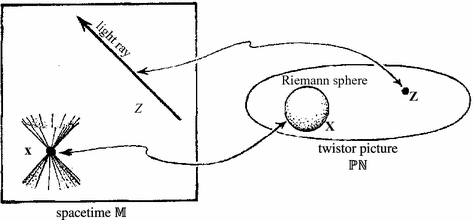There’s a conference at Harvard this week celebrating (somewhat early) the 60th birthday of the geometer Shing-Tung Yau. Since I was passing through Cambridge on the way back from a short vacation, I managed to catch a few of the talks, including two quite nice ones on mathematical physics from Is Singer and Edward Witten.
Singer’s talk was entitled “The Interface between Geometry and Physics, 1967-2007”, and summarized some of the advances in this area that he has been involved with over the years. 1967 was the year of a Battelle conference in Seattle on the intersection of mathematics and physics, organized by DeWitt [2/12/21: Chris DeWitt tells me this was Cecile DeWitt-Morette] and Wheeler. Singer displayed a copy of a 1966 letter from Feynman to Wheeler turning down an invitation to attend, with the explanation
I am not interested in what today’s mathematicians find interesting.
At the 1967 conference Robert Geroch talked on the topic of singularities in GR, and Singer recalled inviting Geroch to talk at the 1973 geometry conference at Stanford on this topic and the positive mass conjecture. By 1975 Singer had learned from Jim Simons at Stony Brook that non-abelian gauge fields were exactly the connections on principal G-bundles studied by mathematicians. The news of the BPST instanton solution and its significance for physics caused him to seriously start working in this area, work conducted with Hitchin and Atiyah at Oxford. They made use of the index theorem to both calculate the dimension of the moduli space of instantons, and to show that the Dirac operator had zero-modes in instanton backgrounds. Later, Atiyah and Singer interpreted the local gauge anomaly using the farmilies index theorem.
Just as Atiyah did at his recent talk at the Bott conference, Singer interspersed his historical talk with remarks identifying unsolved problems that he thinks are worth attention. The first of these has to do with K-theory, extended to depend not just on vector bundles, but on vector bundles with connection. Here the open problem has to do with the analog of the families index theorem. There’s a topological index (that takes values in the extended K-theory of the family), and the open problem is to define an appropriate analytical index and show topological=analytical equality. Singer had been hoping to have some new results to report on this, but he says that things turned out to be trickier than he had expected, so maybe he’ll have an answer at Yau’s 65th birthday.
The next topic was that of quantum Yang-Mills theory and the Millennium problem of proving the existence of a mass gap. Singer talked mainly about 2+1 YM, his conversations with Feynman about this, and his hopes that the positivity of the sectional curvature of the natural Riemannian connection on the space of gauge potentials modulo gauge transformations could be exploited to prove that there must be a mass gap. Proving this in 2+1d was his second open problem.
His final topic was mirror symmetry and S-duality. Here he speculated that this (and M-theory in general) might have something to do with a phenomenon from operator algebra theory. Unlike for N by N matrices, where all maximal abelian subalgebras of self-adjoint operators are conjugate, for certain C* algebras (rings of operators of type II), there are inequivalent such maximal abelian subalgebras. I gather that his idea is that these might correspond to the existence of lots of inequivalent limits of M-theory.
The next morning Witten gave a talk on quantum Yang-Mills and the Millennium problem, saying that this was in response to a request from Yau to explain at a basic level to a wide mathematical audience what this is about. He gave an extremely lucid explanation of the mass gap problem, taking the Hamiltonian point of view. This supplements what he and Jaffe did in the official write-up of the problem, which deals more with the Euclidean picture. As motivation, he explained in detail what happens in the Abelian case, where one can compute everything and there is no mass gap. The audience was appreciative and I think got something out of this, unlike quite a few talks of physicists to mathematicians, which tend to start at much too high a level of complexity, ensuring that only experts can follow.
Witten avoided one aspect of this problem, the one that most fascinates me, that of how you handle the gauge symmetry. In the Abelian case there are several equivalent ways of doing this, but in the non-Abelian case, at least in the continuum, one needs to understand BRST symmetry non-perturbatively, and this remains a difficult problem, one with deep connections to open problems in mathematics.


